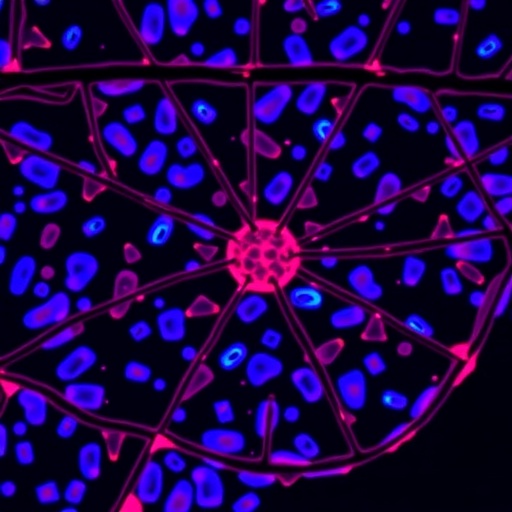A recent series of studies published in JAMA has drawn critical attention to evolving trends in colorectal cancer (CRC) incidence and screening practices among younger adults in the United States. These comprehensive investigations shed light on the dynamic epidemiology of colorectal cancer in adults aged 45 to 49, a group for whom new screening guidelines have recently been introduced. The findings emphasize significant shifts in cancer detection rates and highlight the ongoing challenges in optimizing population-level screening strategies.
After a prolonged period of relative stability spanning 15 years, a notable and sharp increase in the incidence of local-stage colorectal cancer among U.S. adults aged 45 to 49 was observed between 2019 and 2022. This surge is particularly pronounced, with a staggering 50 percent relative increase documented between 2021 and 2022 alone. Such an abrupt rise diverges from previously consistent upward trends in distant-stage diagnoses within this age group. The evidence strongly suggests that this pattern is largely driven by the implementation of new screening recommendations, which lowered the starting age for average-risk colorectal cancer screening from 50 to 45 years.
The crux of this shift centers around the detection of asymptomatic, early-stage cancers uncovered through first-time screening interventions. These findings underscore the potential impact of revised clinical guidelines on identifying colorectal cancer earlier in younger adults who would have otherwise remained undiagnosed until symptoms manifested. Early detection at the local stage typically correlates with improved prognosis and broadened treatment options. Consequently, these epidemiologic trends reinforce the clinical imperative of adhering to updated screening protocols to maximize public health benefits.
.adsslot_Q3yN8XdLke{ width:728px !important; height:90px !important; }
@media (max-width:1199px) { .adsslot_Q3yN8XdLke{ width:468px !important; height:60px !important; } }
@media (max-width:767px) { .adsslot_Q3yN8XdLke{ width:320px !important; height:50px !important; } }
ADVERTISEMENT
Concurrently, trends in colorectal cancer screening adherence have mirrored these epidemiological shifts. Data from 2019 to 2023 reveal a progressive increase in the uptake of CRC screening among adults aged 45 to 49. This encouraging pattern aligns with earlier reports derived from subsets of commercially insured populations during late 2021 to 2022, indicating broader acceptance and implementation of the younger screening age guideline. The observed increase in screening is pivotal, given the well-established link between screening and mortality reduction—primarily mediated through the identification and excision of precancerous lesions before malignant transformation.
The trial’s insights are particularly salient given the overall low screening rates observed, despite recent guideline changes and increased awareness. It suggests that removing barriers to participation by simplifying the screening process and minimizing patient effort may be key strategies to enhance CRC detection within younger populations. This has meaningful implications for both healthcare providers and policymakers aiming to design interventions that effectively navigate the complexities of patient engagement, health literacy, and access disparities.
The aggregated evidence presented in these studies provides a multifaceted perspective on colorectal cancer control efforts tailored to younger adults. The spike in local-stage CRC incidence following screening guideline shifts validates the clinical utility of earlier screening, reinforcing that the benefits of preventative oncology extend beyond traditionally targeted age groups. Furthermore, the evolving screening behavior underscores the importance of adaptable, low-friction health outreach methodologies in translating guidelines into population-level health outcomes.
Future research priorities emerging from these findings include refining risk stratification algorithms to identify individuals within the 45 to 49 age bracket who may benefit from more intensive or alternative screening modalities. Advanced diagnostic techniques such as liquid biopsies, molecular profiling, and integration of electronic medical records could enhance precision screening efforts. Additionally, continued evaluation of behavioral determinants and health system factors that modulate screening adherence will be essential to bridge the gap between guideline recommendations and real-world practice.
These pivotal studies collectively underscore the dynamic landscape of colorectal cancer epidemiology in younger populations amidst paradigm shifts in screening protocols. They highlight the interplay between clinical policy, patient behavior, and cancer biology, urging a multidisciplinary approach to colorectal cancer prevention. The ultimate goal remains to leverage early detection and intervention strategies that significantly reduce the burden of colorectal cancer and improve survival outcomes for younger adults.
The publications provide a timely impetus for healthcare systems nationwide to reorient screening outreach, education, and resource allocation geared toward adults in their mid-forties. They further call attention to the necessity for equitable access to screening services, especially in underserved and at-risk groups that historically exhibit lower screening rates. Addressing these disparities will be key to maximizing the public health impact of new screening guidelines.
In summary, the latest investigations presented in JAMA highlight striking increases in early colorectal cancer detection as a direct consequence of lowered screening age recommendations, while simultaneously revealing gaps in current screening promotion strategies. The preferential efficacy of mailed FIT outreach over portal-based active choice models invites a reassessment of patient engagement practices. Augmenting screening uptake through optimized, patient-centric approaches promises to be a critical frontier in colorectal cancer prevention for younger adults.
These emerging insights not only advance our scientific understanding of colorectal cancer epidemiology and control but also provide actionable pathways for clinical and public health stakeholders. Continued surveillance, coupled with innovative outreach and diagnostic modalities, will be crucial in shaping the future landscape of colorectal cancer screening, ultimately striving to reduce incidence, mortality, and healthcare disparities in this vulnerable demographic.
Subject of Research: Colorectal cancer incidence and screening in U.S. adults aged 45 to 49
Article Title: Not provided
News Publication Date: Not provided
Web References: Not provided
References: Not provided
Image Credits: Not provided
Keywords: Colorectal cancer, United States population, Adults, Young people, Cancer, Mortality rates, Clinical trials, Medical tests, Human health, Oncology, Patient monitoring, Electronic medical records
Tags: asymptomatic colorectal cancer detectioncancer detection rates in 45 to 49 age groupchallenges in cancer screening practicescolorectal cancer epidemiologycolorectal cancer trends in younger adultsimpact of screening on cancer incidenceJAMA colorectal cancer studylocal-stage colorectal cancer increasepopulation-level screening strategiesrising colorectal cancer rates in USscreening guidelines for colorectal canceryoung adult cancer screening trends




